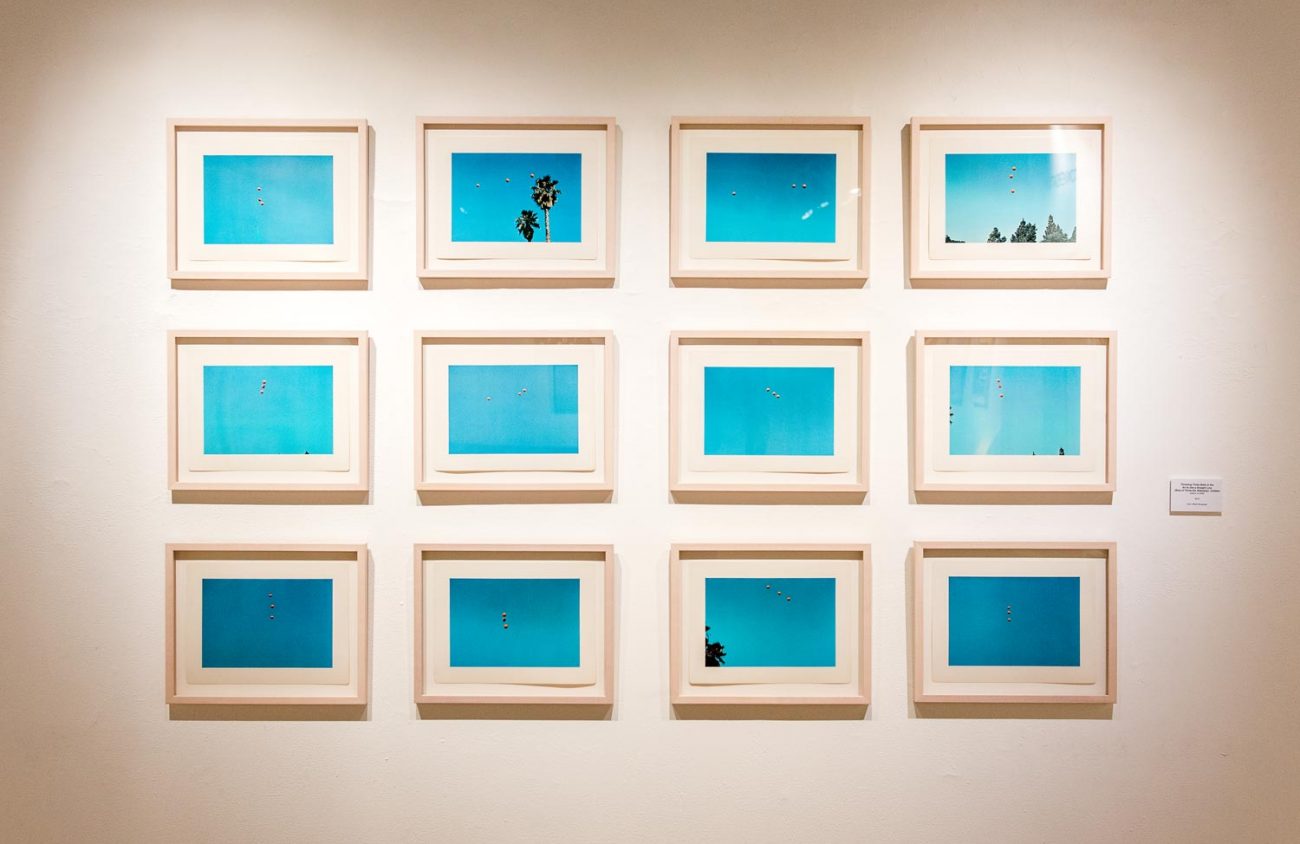Have you ever tried to repeat a phrase until it loses its meaning? Take “appreciating diversity,” for instance. It’s one of those phrases repeated so often, especially on college campuses, that people become indifferent. It’s discussed as a requirement rather than what it is.
So what does it actually mean to appreciate diversity? Oregon State University is attempting to give students and the public an opportunity to find out for themselves by installing the work of five contemporary artists with different backgrounds and interests in five different cultural centers on campus.
The idea that we can have a conversation using art — that art can speak to us — is the framing concept for Cultural Conversations, a sprawling exhibit of prints from Portland philanthropist Jordan Schnitzer’s collection running through May 3 at OSU. The artists are Mildred Howard, at Lonnie B. Harris Black Cultural Center; John Baldessari, at Fairbanks Gallery; Hung Liu, at Asian and Pacific Cultural Center; Joe Feddersen, at the Native American Longhouse; and Eena Haws and Enrique Chagoya at Centro Cultural César Chávaez.
The art is displayed at places where students spend time, where they socialize and where they study. At the crowded opening reception for Cultural Conversations, OSU President Ed Ray said that in order to be a good university, an institution has to celebrate the arts and integrate them with other subjects. He suggested that though we may go to school to learn math and literature, art allows us to express how we feel and think about what we learn.
Ray said he had not been exposed to art before going to college. Taking an art appreciation course when he was in college, he said, pulled a curtain back on a new world.
Schnitzer, who also spoke at the reception, had a different experience growing up. The son of Portland philanthropist and gallery owner Arlene Schnitzer and the late real estate magnate Harold Schnitzer, Jordan Schnitzer at 14 started collecting art with a piece he bought at his mother’s Fountain Gallery.
Since then Schnitzer has amassed roughly 10,000 artworks. I asked OSU art history professor Kirsi Peltomäki, who curated the pieces for this exhibit, whether there was a theme to the diverse display of art. “Yes,” she said. All of it includes “a dialogue between the past and the present.”
Baldessari’s work, for example, has a conversation with Marcel Duchamp. Throwing three balls in the air to get a straight line, the famous California conceptual artist addresses the culture of science, particularly the way we arrive at standard measurements.
Duchamp was associated with Dada, a movement of modern art that criticized traditional approaches. He is now often referred to as the father of conceptual art (we don’t know who the mother is, but she might be Duchamp’s alter-ego Rrose Selavy).
Baldesarri’s Throwing Three Balls in the Air to Get a Straight Line (Best of Thirty-Six Attempts) speaks to Duchamp’s work called Standard Stoppages from 1913-14. To get his three standard stoppages (standards of measurement) Duchamp threw pieces of string on the floor, then used the shapes in which they landed to create templates.
Duchamp was having a playful conversation with science, pointing out that standards arrived at arbitrarily are nevertheless useful tools. Although Baldessari works with the now-traditional medium of photography, his work is conceptual and playful as well, very much a continuation of the conversation begun by Duchamp in 1913.
A favorite moment of mine at the opening reception, which spread itself around the OSU campus, was at Centro Cultural César Chávez while viewing a print by Chagoya and listening to people looking at another of his works beside me. These prints are colorful and surreal landscapes in which people from different cultures, real and imagined, are portrayed.
I was looking at The Thingly Thingness of Things, which is a multiple portrait. The group of people gathered around the artwork beside me was viewing The Pastoral or Arcadian State: Illegal Alien’s Guide to Greater America. In these works, Chagoya obliterates, partially hides or blends his subject matter into the background. We all wound up standing in front of these artworks for a considerable length of time, looking for and spotting particulars, and pointing them out to each other.
Sometimes a phrase or even a word such as “diversity” is said so often it loses its meaning. That’s why it’s important to, as a teacher might say, put it in your own words.
This is what Cultural Conversations does, though not with words (or hardly any). Each of the artists approaches, examines, satirizes and illuminates, presenting culture from their own perspective and continuing the conversation anew.
The map for locations of Cultural Conversations exhibit on campus at OSU can be found at liberalarts.oregonstate.edu.
